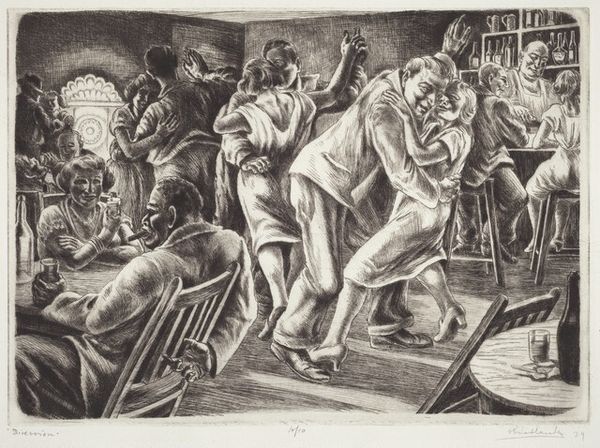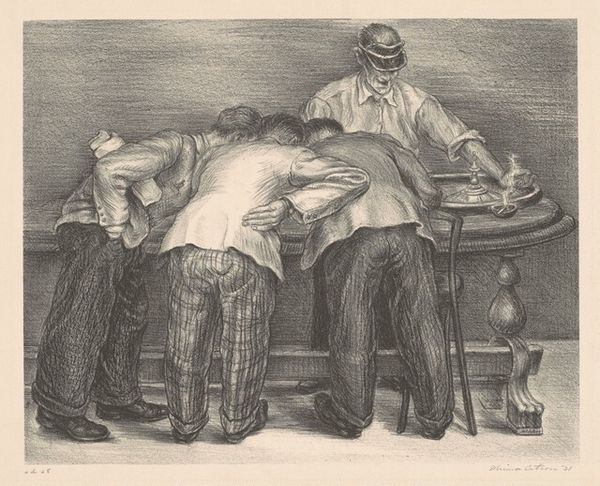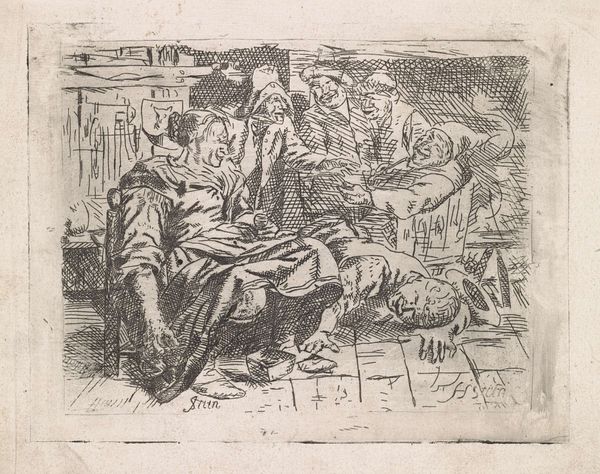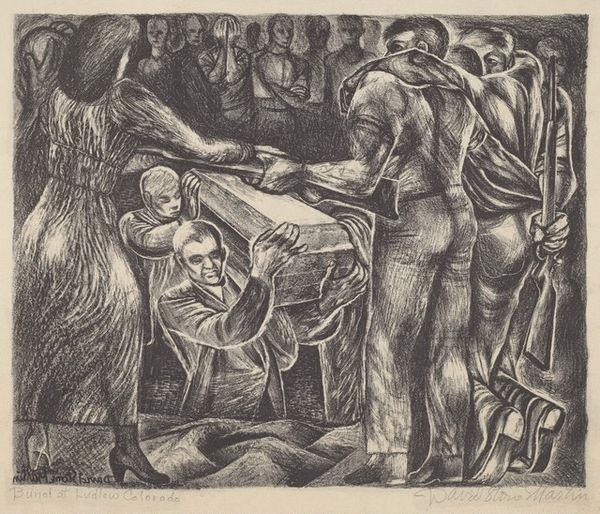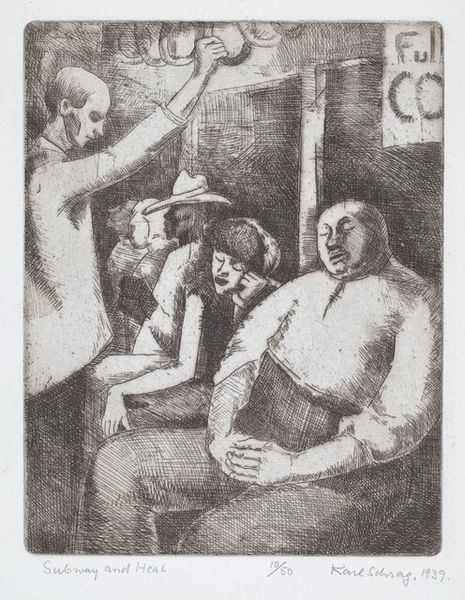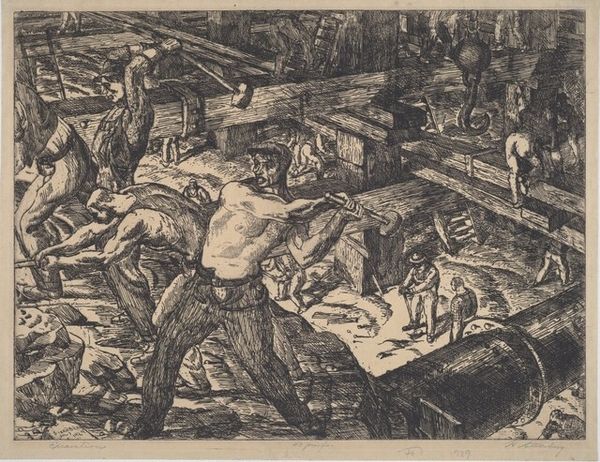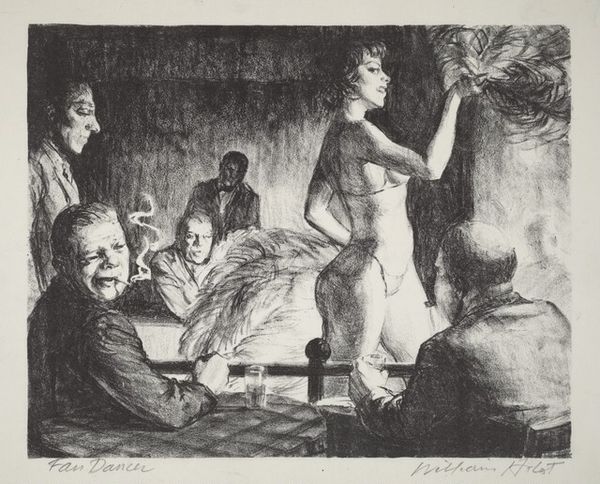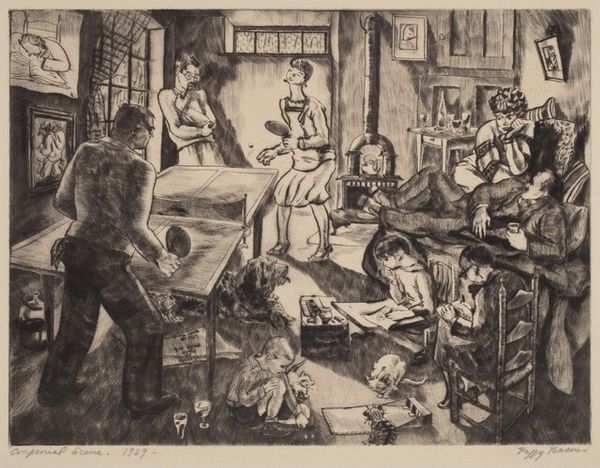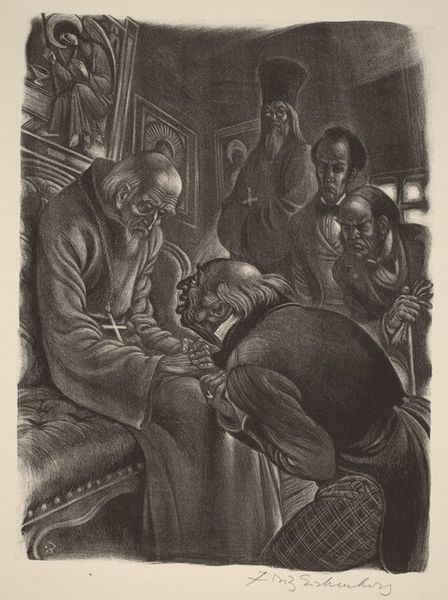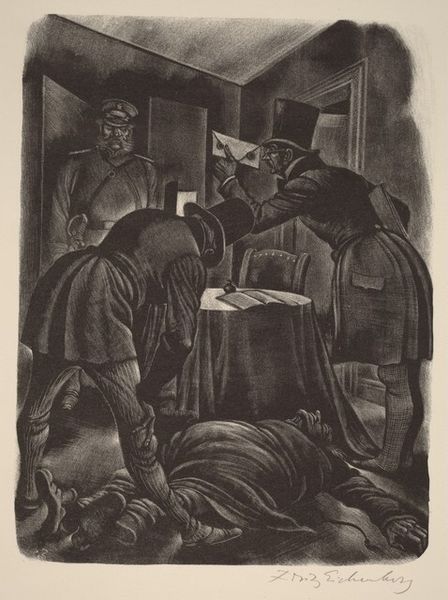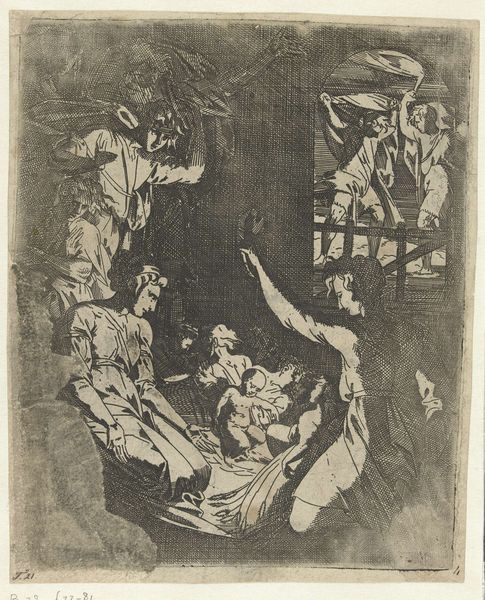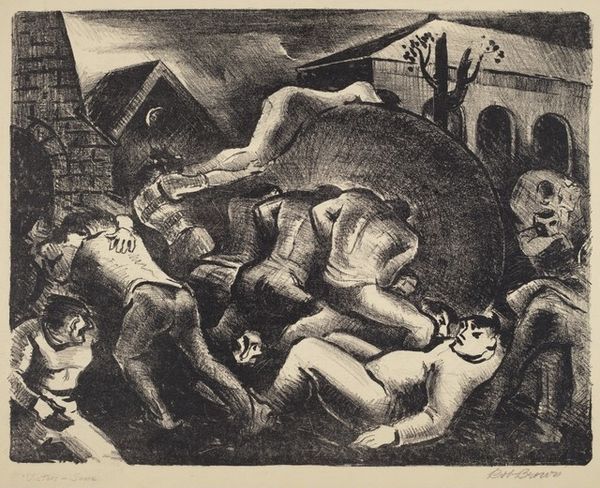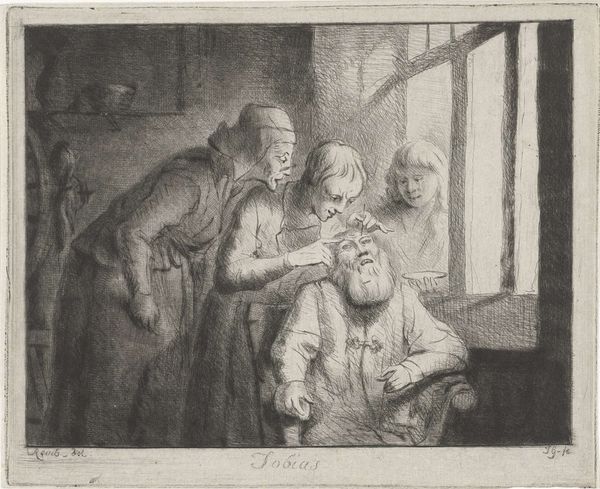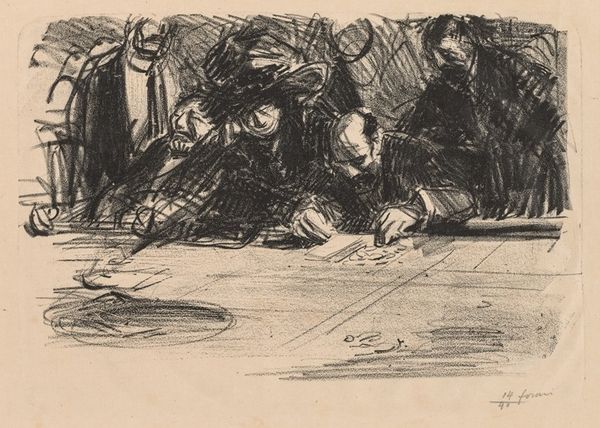
drawing, print, pencil
#
drawing
# print
#
figuration
#
social-realism
#
pencil drawing
#
pencil
#
genre-painting
#
modernism
Dimensions: image: 247 x 329 mm sheet: 293 x 370 mm
Copyright: National Gallery of Art: CC0 1.0
Curator: "Defense Plant Series #2: Time and a Half," created by Olin Herman Travis, most likely between 1941 and 1943, appears to be a print, a drawing done in pencil, and it presents us with a scene that captures a very specific moment. Editor: Bleak. That's my first thought. It feels…claustrophobic? Cramped. All these bodies slumped in rows; the harsh light and shadow almost press down on them. Is it supposed to be lunchtime at the titular defense plant? Curator: The image fits well into the style we now know as Social Realism, and it does show what appears to be downtime among laborers. It is possible that this scene contains a message, the message perhaps one of labor exploitation that became prevalent during periods of increased militarization. Editor: Exploitation, maybe. I definitely see exhaustion etched on those faces. Notice the figure tying his shoes, and how he appears downtrodden, weary. He can't even seem to muster any enthusiasm for anything except for getting ready for the next shift. The overhead lighting isn't flattering, and look at the angle of perspective – the composition emphasizes the relentless rows, which add to this idea of routine, of oppression, within an industrial structure. Curator: Oppression indeed; and this relates back to Social Realism. Note the deliberate positioning and action captured here; even the small paper tucked into the can is meant to underscore that feeling, offering an illustration, and even social criticism, on how industrialized conditions had infiltrated every sphere of lived human experience. The style evokes this by creating contrast: you have both clarity and almost a lack of definition; stark representation but some softening of the characters as well, like a dream-state. Editor: The details are certainly… intentional. You said this was from the early '40s? It makes me wonder, was Travis actively trying to document and perhaps critique these scenes of American labor, to maybe inspire people during such tumultuous times to change their fate or make life different for themselves? The image possesses this double quality that evokes resilience and resistance in light of oppression and even social dejection. Curator: In times of crisis, symbolism often flourishes, serving as a subtle way to communicate resistance and resilience. It makes you ponder how deeply embedded visual communication is to the understanding of who we are and where we belong, doesn’t it? Editor: Absolutely. A single image—especially one rendered with such starkness—can echo across generations. This has given me much food for thought today.
Comments
No comments
Be the first to comment and join the conversation on the ultimate creative platform.
